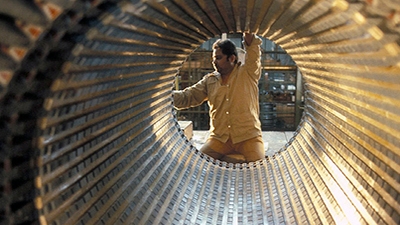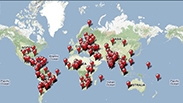Bank Group Contribution
More than $1.45 billion in competitiveness projects have been sourced from the competitiveness programs through 27 projects under active implementation, almost entirely sourced from IDA/IBRD funds. An additional 19 projects worth $1.566 billion are in the design phase. Together these 40 projects are spread worldwide: 53 percent are located in Africa, 5 percent in East Asia and the Pacific, 8 percent in Europe and Central Asia, 15 percent in Latin America or the Caribbean, 8 percent in the Middle East and North Africa, and 13 percent in South Asia. The Competitive Industries practice is also leading 56 analytical and advisory activities spread through various countries and regions: 66 percent are in Africa, 2 percent in East Asia and the Pacific, 5 percent in Europe and Central Asia, 7 percent in Latin America or the Caribbean, 11 percent in the Middle East and North Africa, 7 percent in South Asia, and 2 percent in global initiatives.
The CI practice leverages the Competitive Industries and Innovation Program (CIIP), a new multi-donor partnership, which serves as a global delivery platform to complement World Bank Group contributions to the Competitive Industries practice – mobilizing global expertise, operational know-how and investment resources. Over its five-year time frame – since its launch in Fiscal Year 2013 – CIIP’s partners are seeking to mobilize a total of $100 million in direct support, which will in turn leverage an additional $6 billion to $8 billion in public investments (including World Bank Group lending) and a significant amount of private investment. Currently, 12 CIIP-supported country operations are under preparation (worth almost $12.5 million), along with four global knowledge products (valued at almost $3 million) and additional cross-cutting knowledge products (worth an additional $3 million).
Partners
Along with the World Bank Group, many partners, including the European Commission, Austria and Switzerland – the funders of the CIIP – have embraced the CI approach. A “brains trust” of academic scholars – including Ricardo Hausmann of Harvard University, Francis Fukuyama of Stanford University, Dani Rodrik of Princeton University, Charles Sabel of Columbia University and Arun Maira of the Planning Commission of India – provides counsel to the Competitive Industries practice. Another group of seasoned practitioners includes senior experts from Malaysia, Spain and Chile. A recent global conference organized by the Competitive Industries practice, with financial support from CIIP, brought together partners and clients engaged in implementing industrial policies, private-sector representatives involved in framing such policy interventions, and distinguished academic scholars researching such policy approaches. The event attracted more than 200 participants and provided a venue to propel the debate in the “how” of growth and competitiveness, studying experiences from around the world.
Moving Forward
The CI practice, along with CIIP, will continue to support the WBG’s efforts to promote competitiveness, jobs and prosperity, first by focusing on delivering results on the recently funded operations and then by on enlarging its pool of activities.
Beneficiaries
Hassane Bola, a butcher near Maradi, the agricultural hub of Niger's Hausa region, has benefited – along with others in the 4,000 newly created enterprises – from the World Bank’s value-chain project, which has improved road access and meat storage and processing facilities for small and medium-sized businesses operating in the meat and butchery industry.
He says:

